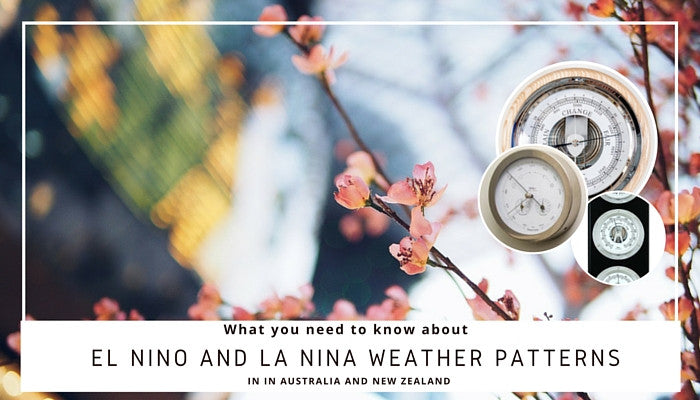 Hasn't the weather been something this summer? It almost seems like it is cycling with 4 days of hot and 4 days of cold. We are having an El Nino summer in New Zealand and Australia. Now for those of you who are not weather buffs, I thought I would take a few months to talk to you about what this means for you and what to expect.
Hasn't the weather been something this summer? It almost seems like it is cycling with 4 days of hot and 4 days of cold. We are having an El Nino summer in New Zealand and Australia. Now for those of you who are not weather buffs, I thought I would take a few months to talk to you about what this means for you and what to expect.
What is El Niño and La Niña?
According to the Australian Bureau of Meteorology they are a part of a natural cycle known as the El Niño–Southern Oscillation (ENSO) and are associated with a sustained period (many months) of warming (El Niño) or cooling (La Niña) in the central and eastern tropical Pacific. The ENSO cycle loosely operates over timescales from one to eight years.
Potential effects of El Niño on Australia and New Zealand include:
• Reduced rainfall
• Warmer temperatures
• Shift in temperature extremes
• Increased frost risk
• Reduced tropical cyclone numbers
• Later monsoon onset
• Increased fire danger in southeast Australia
• Decreased alpine snow depths
It starts in the ocean
We are currently in an El Nino which occurs when sea surface temperatures in the central and eastern tropical Pacific Ocean become substantially warmer than average, and this causes a shift in atmospheric circulation.
That makes rain clouds
Warming of ocean temperatures in the central and eastern Pacific causes this area to become more favourable for tropical rainfall and cloud development. As a result, the heavy rainfall that usually occurs to the north of Australia moves to the central and eastern parts of the Pacific basin.








Leave a comment (all fields required)